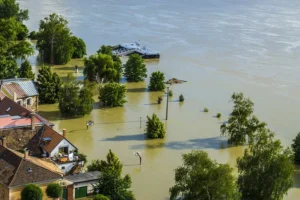Rivers are often subjected to human interventions such as structural confinement and aggregate mining, which significantly alter their natural flow and topography. A recent study conducted on the gravel-bed Bislak River in the Philippines sheds light on how these activities influence river morphology, hydraulics, and flood risks.
Using repeat, system-scale, high-resolution topographic surveys, researchers examined annual morphological changes in the Bislak River. They coupled this data with two-dimensional hydraulic modeling to simulate the impacts on flood risk. The findings highlight a complex interplay between human actions, sediment dynamics, and river hydraulics.
Key Findings
Sediment Dynamics and Topography
Aggregate mining was found to export sediment from the river, leading to pitted and uneven riverbeds. Meanwhile, embankments created deeper channels but disconnected the river from its natural floodplain. These changes significantly altered the river’s capacity and flood dynamics.

Changes in Flood Risk
The study revealed that while increased channel capacity led to reduced flood risk up to a 5% decrease in inundated areas for 10- to 100-year return periods these benefits came with trade-offs. The removal of sediment heightened bed shear stress, potentially causing scour, infrastructure damage, and increased flood impacts in certain areas.
Rising global populations in floodplain regions and the growing demand for construction aggregates compound the challenges of managing river systems. The study emphasizes that poorly managed interventions can exacerbate risks, underscoring the importance of sustainable practices.
Legacy of Fire Suppression
For decades, fire suppression policies have allowed fuel to accumulate in forests and grasslands, setting the stage for more intense wildfires. Similar

parallels can be drawn in river systems, where sediment management policies or the lack thereof have primed many rivers for increased flood and erosion risks.
Urban development along riverbanks, often in flood-prone areas, introduces new challenges. Flammable structures and infrastructure not only amplify fire risks in wildland-urban interfaces but also alter flood patterns when placed in dynamic river systems.
The Path Forward: Sustainable River Management
To mitigate flood risks while supporting economic development, the study advocates for:
- Restorative Practices: Controlled sediment replenishment and vegetation management to stabilize riverbanks.
- Infrastructure Upgrades: Designing embankments and channels that balance flood control with ecological integrity.
- Holistic Policies: Integrating geomorphological dynamics into urban planning and disaster preparedness strategies.
Global Relevance
The findings from the Bislak River resonate globally, especially as climate change exacerbates extreme weather events. Sustainable river management is essential to balance human needs with the preservation of natural ecosystems, ensuring resilience against the dual threats of floods and erosion.
By adopting science-backed strategies and prioritizing long-term sustainability, societies can transform rivers from sources of risk into assets for development and ecological health.
